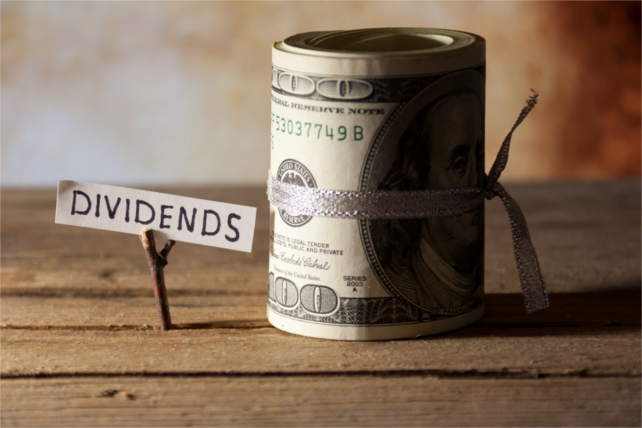Learn which stocks the world's top hedge fund managers are looking at investing in right now
Join 1000+ other investors who get access to behind the scenes investing strategies & shareholder letters from leading Hedge Funds
Investing in stocks that distribute dividends is a great way to take advantage of compound interest through a dividend yield. When a publicly traded company earns a profit, it can choose to distribute the profit to the shareholders of the company. Shareholders will receive a dividend if they purchased the stock by the ex-dividend date. The ex-dividend date is typically set two business days before the record date, which is the date when an investor must be on the company’s books as a shareholder.
To ensure compound interest is earned, investors should enroll in the Dividend Reinvest Plan (DRIP). The dividend that is issued by a corporation will automatically purchase additional shares on the payable date. Thus, subsequent dividend distributions will be increased because the investor has more shares. To lock in a dividend yield, an investor should purchase a stock with a dividend that satisfies the investor’s desired rate of return. If a corporation consistently distributes a $0.25 dividend per quarter, or $1.00 annually, and the price per share of that corporation is $20.00 per share, the dividend yield is 5.00% ($1.00/$20.00), which is calculated by dividing the dividend (per annum) by the initial purchase price of the stock. Once the stock is purchased by the investor, the dividend yield is locked in for the duration the investor owns the stock, as long as the corporation issuing the dividend does not alter the distribution rate.
Dividend Yield = Dividends per Annum ÷ Initial Purchase Price per Share
Dividend Yield Calculator
The intriguing fact about the dividend yield is that it is set once the investor purchases the stock. If the price of the stock goes up from $20 per share to $30 per share, assuming the dividend remains consistent at $0.25 per quarter, the yield will be reduced from 5.00% to 3.33% ($1.00/$30.00). The reduction in yield does not affect the investor who purchased the stock at $20 per share. Conversely, if the price of the stock drops from $20 per share to $10 per share, the dividend yield will rise from 5.00% to 10.00% ($1.00/$10.00), but the investor who paid $20.00 per share will not partake in the increased dividend yield.
Dividends can be changed by a corporation and are not necessarily locked in or guaranteed. If a publicly traded company falls on hard economic times, the dividend can be reduced or eliminated. For example, Bank of America [stock_quote symbol=”BAC” show=”symbol” zero=”#000″ minus=”#f00″ plus=”#0f0″ nolink=”true”] cut dividend distribution in 2008 during the financial crisis caused by the housing market collapse, slashing its dividend yield roughly from 1.09% to 0.08%.
Despite the possibility that a dividend will be reduced or eliminated, dividend distribution is an excellent way to earn compound interest. Investors should research a publicly traded corporation extensively and not base their entire decision on the dividend yield. This should be one aspect in evaluating the stability and growth potential of a company. In general, mature companies with strong financial balance sheets issue dividends consistently and are great investments for investors who have a weak stomach for volatility. Investors that are interested in finding publicly traded companies with favorable dividend yields can search stock exchanges like the Nasdaq or investment publications such as the Wall Street Journal.
Want to see what stocks the top hedge funds are looking at BEFORE it hits the mainstream news? Get free access for 7 days






